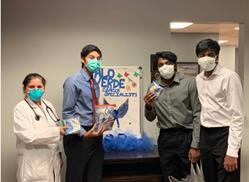Your midlife diet has an impact on your health beyond the age of 70. This may come as a surprise, but new evidence supports the idea. According to the study, eating a balanced diet in your 40s may greatly improve your odds of living a long and healthy life.
Less than 10% of people are able to sustain excellent mental, cognitive, and physical health past the age of 70, but you could hold the keys to becoming one of these select few.
Diet in middle age and future health
Some surprising findings were revealed by the research, which focused on a large data set of over 100,000 people studied for 30 years.
It was shown that those who started eating healthily in their 40s had a significantly higher chance of having a well-functioning body and mind when they were 70. In fact, when compared to individuals who did not follow a balanced diet, their chances of aging healthily were increased by as much as 84%.
Dr. Anne-Julie Tessier, a postdoctoral fellow at the Harvard TH Chan School of Public Health, stated that “people who adhered to healthy dietary patterns in midlife, especially those rich in fruits, vegetables, whole grains, and healthy fats, were significantly more likely to achieve healthy aging.”
One crucial hint is provided by the research: “The quality of your aging process can be significantly impacted by your midlife diet.”
Does aging well require a special diet?
Nuts, legumes, fruits, vegetables, whole grains, unsaturated fats, nuts, and low-fat dairy products have all been connected to increased odds of healthy aging. On the other hand, there was a correlation found between decreased chances of healthy aging and large intakes of trans fat, sodium, whole meats, and processed meats.
This study is unique in that it focuses on healthy aging, even though there have been many studies investigating the effect of nutrition on chronic diseases.
Here, being able to live freely and maintain a high standard of living as one ages is considered healthy aging, rather than just the absence of disease.
According to Tessier, “dietary guidelines and research have traditionally focused on preventing chronic diseases like heart disease.” “Our study provides evidence for dietary recommendations to consider not only disease prevention but also promoting overall healthy aging as a long-term goal.”
Rethinking the Dietary Recommendations
The study examined information from more than 106,000 participants who were free of chronic illnesses and at least 39 years old as of 1986. Not surprisingly, by the age of 70, only 9.2% of respondents had maintained their level of physical, cognitive, and mental fitness.
Notable trends were observed, based on eight healthy dietary patterns from earlier scientific investigations.
The strongest link was seen with the alternative healthy eating index, which closely followed the Dietary Guidelines for Americans. Individuals who adhered to this food regimen had an 84% higher chance of aging healthily than those who did not.
Researchers also discovered that a diet known as the “planetary health diet,” which is modeled after the one recommended by the EAT Lancet Commission, significantly influenced the process of good aging.
The link between a healthy aging process and a planetary health diet was one of Tessier’s most notable discoveries. The EAT Lancet Commission’s report, which places an emphasis on fruits, vegetables, whole grains, plant proteins, and healthy fats from sustainable sources, served as the foundation for this diet.
“The fact that it emerged as one of the leading dietary patterns associated with healthy aging is particularly interesting because it supports that we can eat a diet that may benefit both our health and the planet.”
Even after accounting for variables like physical exercise, which is known to have an impact on health, these results persisted. All the physical, cognitive, and mental aspects of good aging were associated with each food pattern.
Supplements’ place in diets for middle-aged people
In a midlife diet that focuses on healthy aging, supplements might be helpful even if whole foods should be the main focus.
Research has demonstrated the benefits of specific vitamins and minerals, including antioxidants, omega-3 fatty acids, and vitamin D, for both physical and mental well-being.
Future research may assist to explain the possible implications of making a healthy diet change later in life, as the study focused on midlife dietary patterns. The study’s findings do, however, make one thing abundantly evident: the seeds of good aging are planted in middle age.

 Technology4 weeks ago
Technology4 weeks ago
 Science4 weeks ago
Science4 weeks ago
 Business4 weeks ago
Business4 weeks ago
 Business4 weeks ago
Business4 weeks ago
 Business4 weeks ago
Business4 weeks ago
 Business3 weeks ago
Business3 weeks ago
 Uncategorized4 weeks ago
Uncategorized4 weeks ago
 Technology3 weeks ago
Technology3 weeks ago












